Detecting sample symmetry
Explains how to detect orthotropic symmetry in an ODF.
| On this page ... |
| A synthetic example |
| Reconstruct an ODF from simulated EBSD data |
| Detect the sample symmetry axis in the reconstructed ODF |
| Sample symmetry in an ODF computed from pole figure data |
A synthetic example
We start by modeling a orthotropic ODF with cubic crystal symmetry.
CS = crystalSymmetry('cubic'); SS = specimenSymmetry('222'); % some component center ori = [orientation.byEuler(135*degree,45*degree,120*degree,CS,SS) ... orientation.byEuler( 60*degree, 54.73*degree, 45*degree,CS,SS) ... orientation.byEuler(70*degree,90*degree,45*degree,CS,SS)... orientation.byEuler(0*degree,0*degree,0*degree,CS,SS)]; % with corresponding weights c = [.4,.13,.4,.07]; % the model odf odf = unimodalODF(ori(:),'weights',c,'halfwidth',12*degree) % lets plot some pole figures h = [Miller(1,1,1,CS),Miller(2,0,0,CS),Miller(2,2,0,CS)]; plotPDF(odf,h,'antipodal','silent','complete')
odf = ODF
crystal symmetry : m-3m
specimen symmetry: 222
Radially symmetric portion:
kernel: de la Vallee Poussin, halfwidth 12°
center: Rotations: 4x1
weight: 1
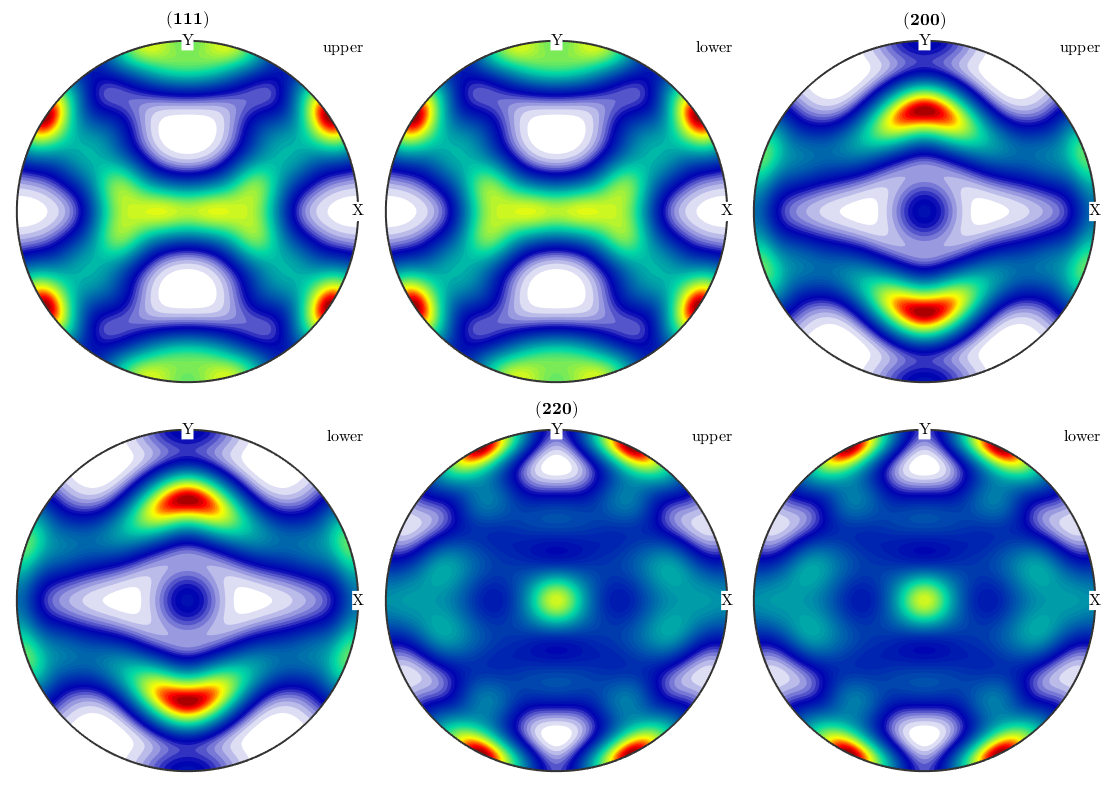
Reconstruct an ODF from simulated EBSD data
Next we simulated some EBSD data, rotate them and estimate an ODF from the individual orientations.
% define a sample rotation %rot = rotation.byEuler(0*degree,0*degree,1*degree); rot = rotation.byEuler(15*degree,12*degree,-5*degree); % Simulate individual orientations and rotate them. % Note that we loose the sample symmetry by rotating the orientations ori = rot * calcOrientations(odf,1000) % estimate an ODF from the individual orientations odf_est = calcODF(ori,'halfwidth',10*degree) % and visualize it figure, plotPDF(odf_est,h,'antipodal',8,'silent');
ori = orientation
size: 1 x 1000
crystal symmetry : m-3m
specimen symmetry: 1
odf_est = ODF
crystal symmetry : m-3m
specimen symmetry: 1
Harmonic portion:
degree: 25
weight: 1
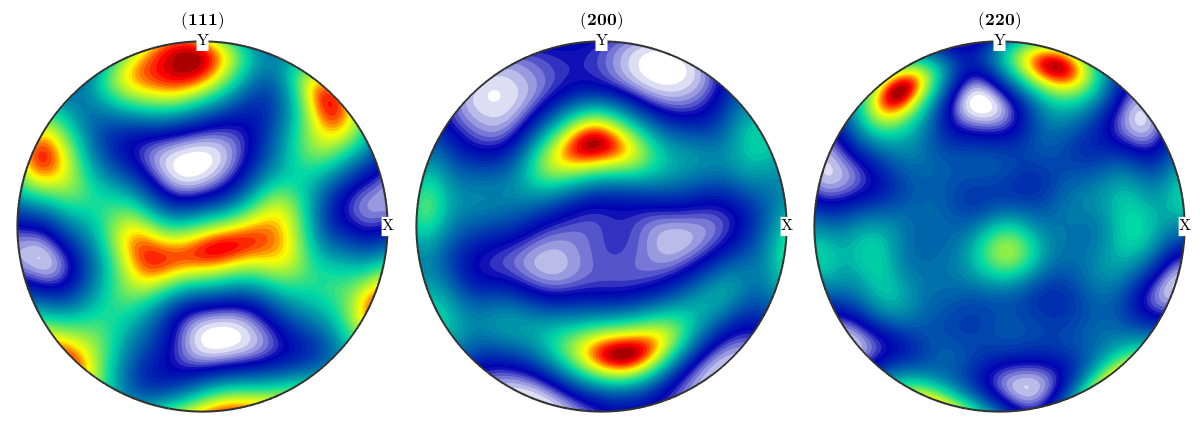
Detect the sample symmetry axis in the reconstructed ODF
We observe that the reconstructed ODF has almost orthotropic symmetry, but with respect to axed different from x, y, z. With the following command we can determine an rotation such that the rotated ODF has almost orthotropic symmetry with respect to x, y, z. The second argument is some starting direction where MTEX locks for a symmetry axis.
[odf_corrected,rot_inv] = centerSpecimen(odf_est); figure plotPDF(odf_corrected,h,'antipodal',8,'silent') % the difference between the applied rotation and the estimate rotation angle(rot,inv(rot_inv)) / degree
progress: 100% progress: 100% progress: 100% progress: 100% ans = 15.6088
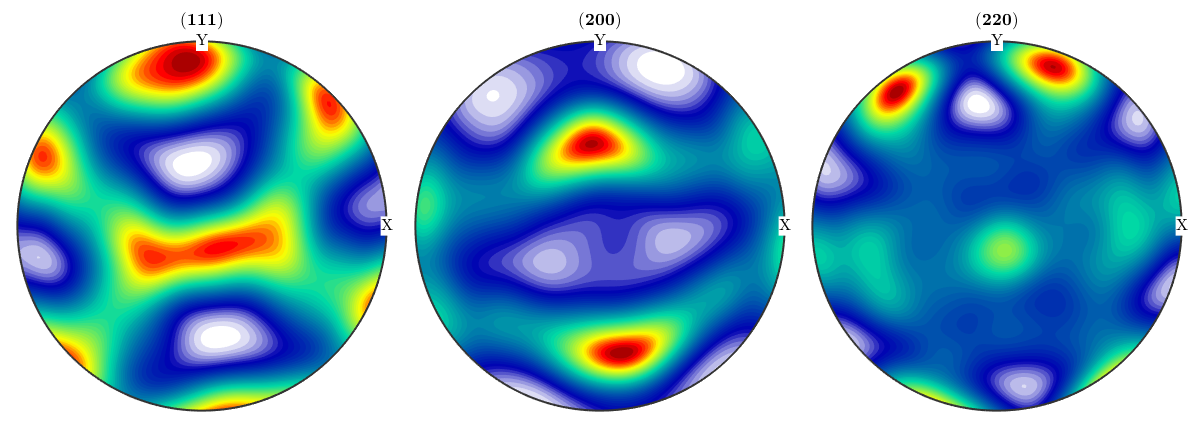
Sample symmetry in an ODF computed from pole figure data
In the next example we apply the function centerSpecimen to an ODF estimated from pole figure data. Lets start by importing them
fname = fullfile(mtexDataPath,'PoleFigure','aachen_exp.EXP'); pf = PoleFigure.load(fname); plot(pf,'silent')

In a second step we compute an ODF from the pole figure data
odf = calcODF(pf,'silent') plotPDF(odf,h,'antipodal','silent')
odf = ODF
crystal symmetry : m-3m
specimen symmetry: 1
Radially symmetric portion:
kernel: de la Vallee Poussin, halfwidth 10°
center: 4895 orientations, resolution: 5°
weight: 1
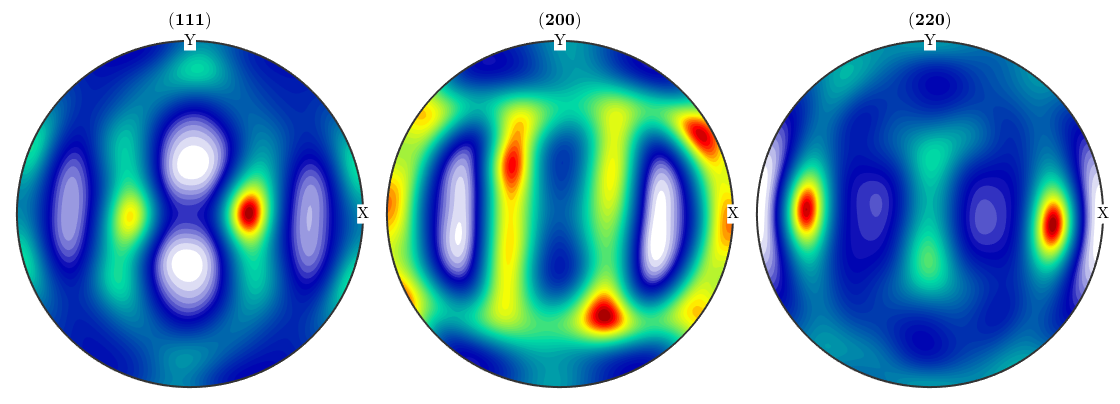
Finally, we detect the orthotropic symmetry axes a1, a2, a3 by
[~,~,a1,a2] = centerSpecimen(odf,yvector) a3 = cross(a1,a2) annotate([a1,a2,a3],'label',{'RD','TD','ND'},'backgroundcolor','w','MarkerSize',8)
progress: 100%
progress: 100%
progress: 100%
progress: 100%
progress: 100%
a1 = vector3d
size: 1 x 1
x y z
0.0499876 0.998745 0.00325886
a2 = vector3d
size: 1 x 1
x y z
-0.99875 0.0499879 0
a3 = vector3d
size: 1 x 1
x y z
-0.000162903 -0.00325478 0.999995
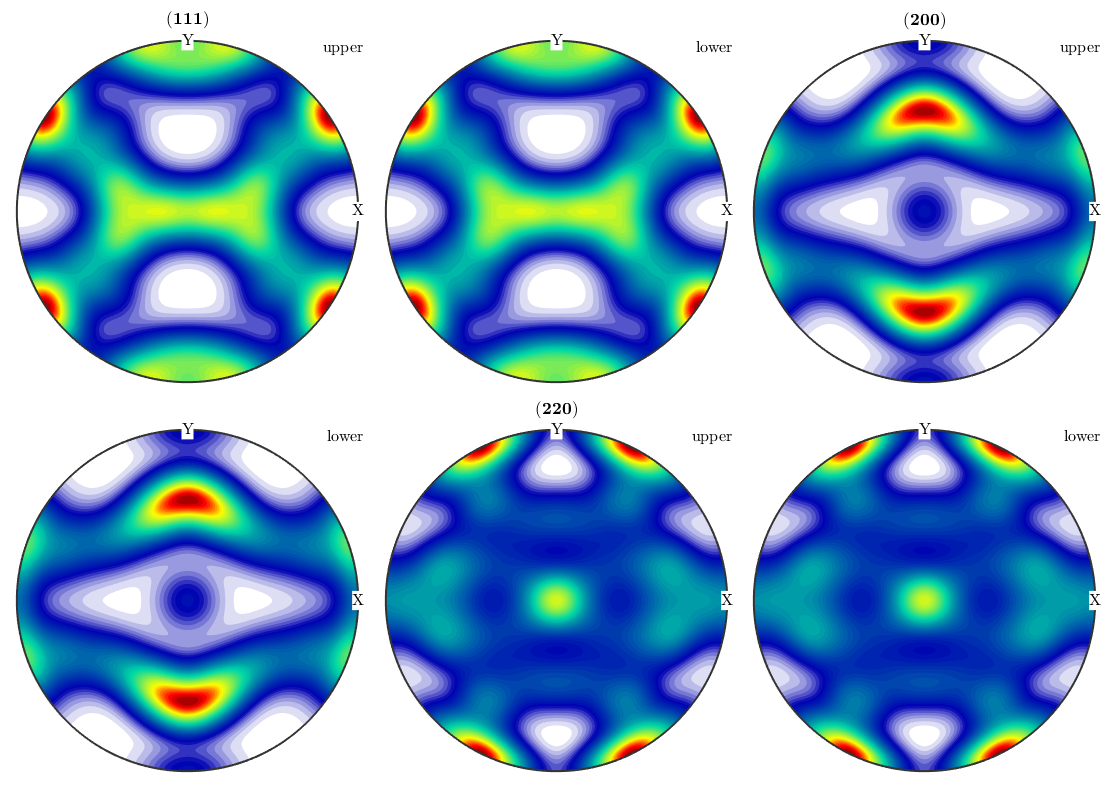
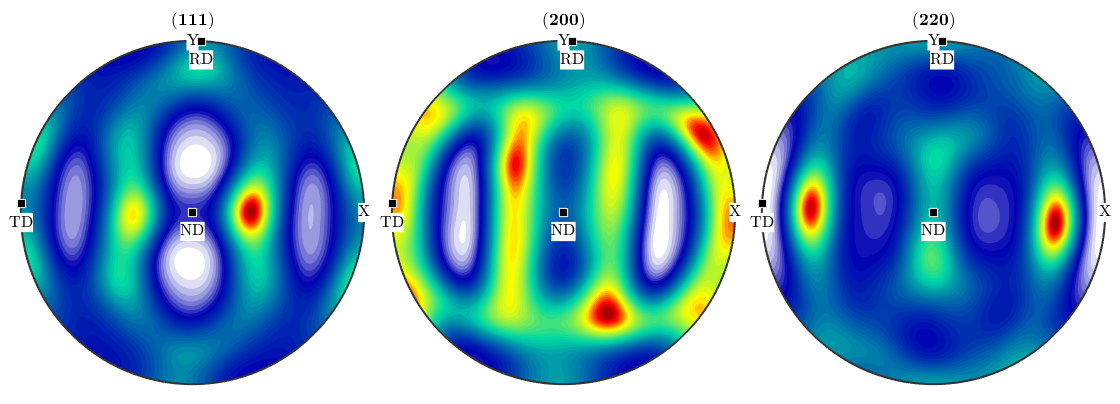
| DocHelp 0.1 beta |